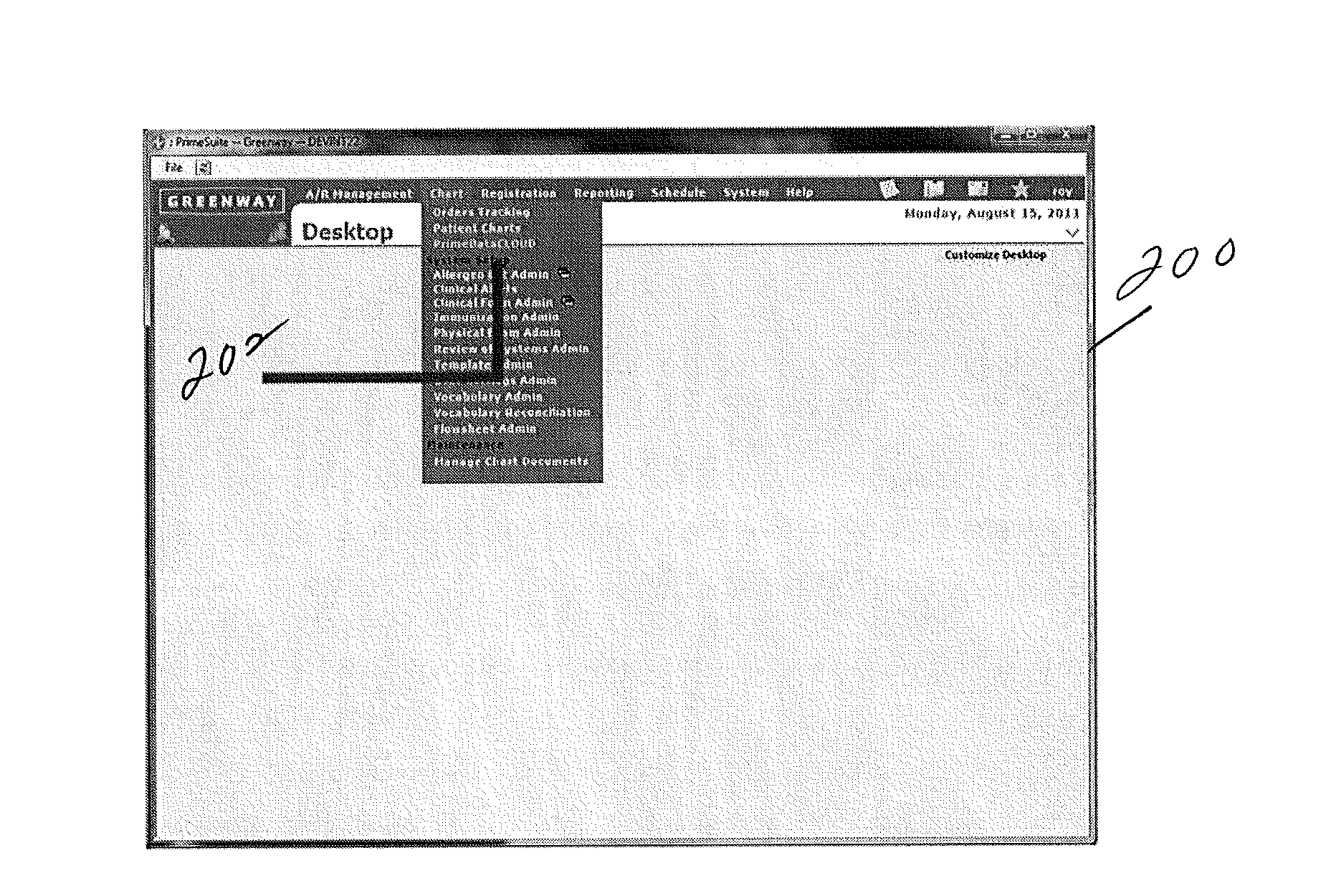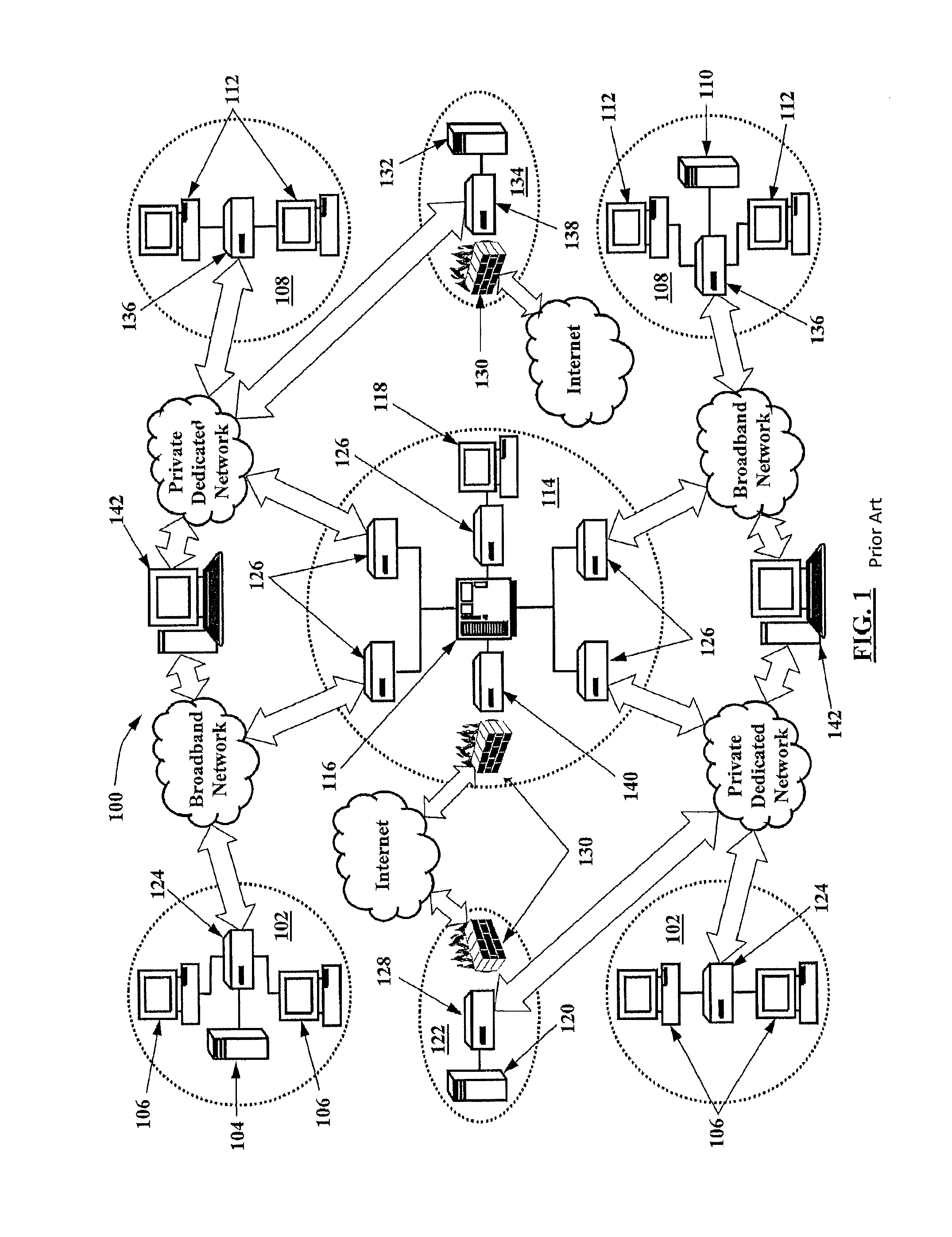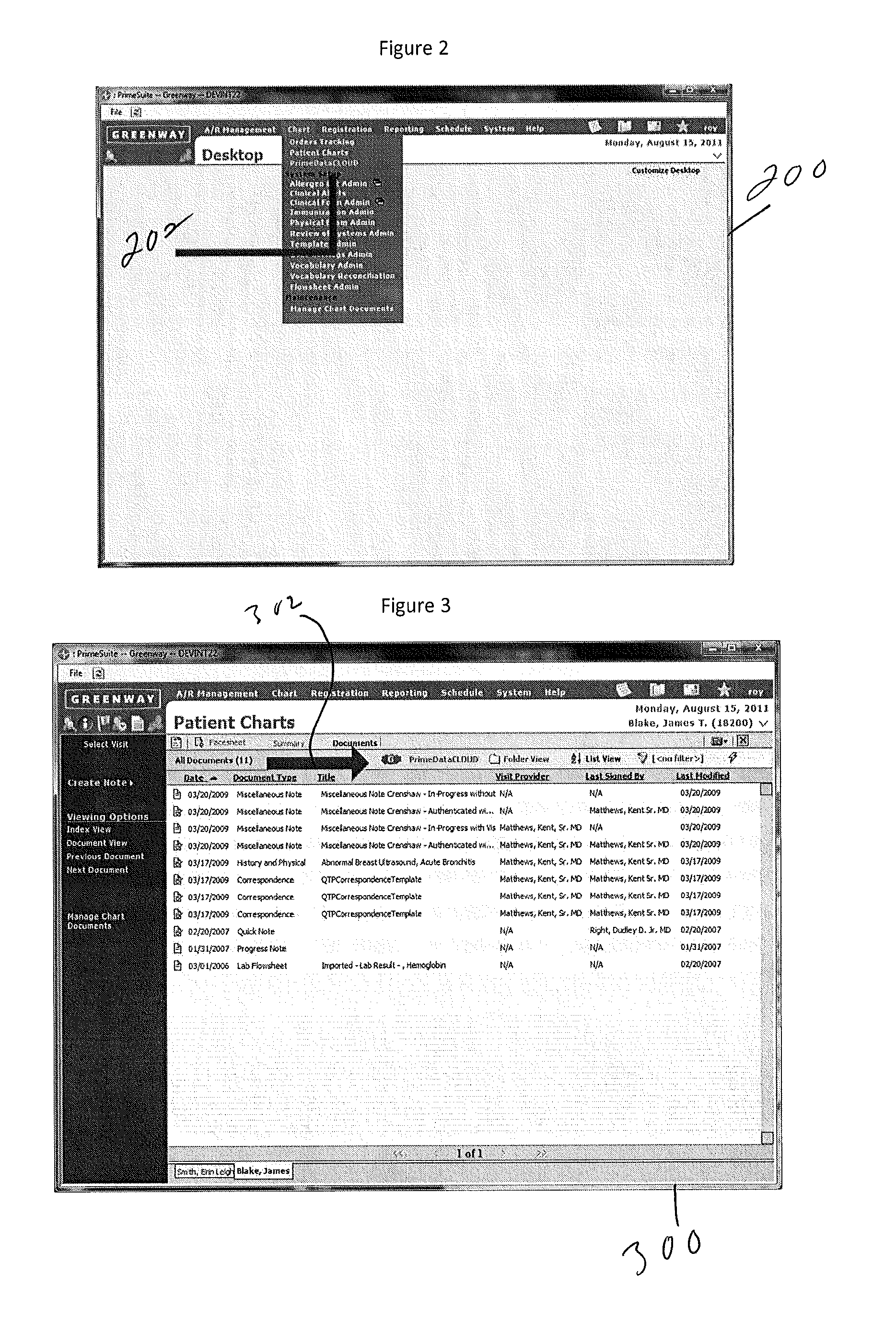The manual, paper-based practice of keeping a patient's information, however, is a very inefficient, labor-intensive process requiring many checks and balances to ensure accurate
processing of the information and requiring a significant amount of the healthcare provider's time that could otherwise be spent with the patient.
Most of the commercially available EMR and EHR systems, however, have not been well received by healthcare providers.
Part of the problem with traditional EHR systems is that many of the vendors of those systems have resisted making their
software capable of exporting and importing
patient information using uniform
electronic messaging, document, and form management standards (e.g., the Health Level Seven (HL7) messaging standard, the Continuity of Care Document (CCD) document standard, and the Retrieve Form for Data Capture (RFD) form management standard).
But, when that data is not captured and stored using uniform, standardized medical vocabularies and it is not transmitted using uniform messaging, document, and form management standards, it is of little use outside of the
system in which the data is stored unless custom interfaces are designed to connect that
system to other systems so that data can be shared therebetween.
The process of developing different interfaces between the disparate formats used by different vendors is expensive and difficult.
Moreover, the interfaces are also costly and labor-intensive to maintain.
The problem of
interfacing different EHR systems is exacerbated by the fact that, in the present health care
system, most patient visits are to small, self-contained practices that often treasure their autonomy and are unwilling and / or unable to acquire EHR systems unless each of those systems is individually tailored to the narrow objectives of each specific self-contained practice.
Thus, the various existing systems are not well suited for interaction and
data exchange with each other, or for maintaining information that would be useful to the other systems, and the data collected by the different practice groups using EHR systems is therefore severely fragmented.
Implementation of those regulations increased the overall amount of paperwork and the overall costs required for healthcare providers to operate.
And, the complex legal implications associated with those regulations have caused concerns with compliance among healthcare providers.
With regard to researchers, the HIPAA regulations have hindered their ability to perform retrospective, chart-based research as well as their ability to prospectively evaluate patients by contacting them for follow-up surveys.
The HIPAA regulations have also led to significant decreases
in patient accrual, increases in time spent recruiting patients, and increases in mean recruitment costs for researchers.
And, by requiring that informed consent forms for research studies include extensive detail on how the participant's protected information will be kept private, those already complex documents have become even less user-friendly.
Because most EHR systems are not capable of exporting and importing
patient information in a standardized format and do not utilize functions and features suited for interaction and
data exchange with other systems, the fragmented pools of data collected using those systems cannot easily be combined with the ocean of data collected across a
population of patients, much less a
community of patients.
Accordingly, collecting data across a broad swath of patients to perform
medical research, to maintain
disease registries, to track
patient care for quality and safety initiatives, and to perform composite clinical and financial analytics remains a time-consuming and expensive process.
For example, a
clinical research organization (CRO) tasked with identifying patients that satisfy certain criteria for participating in a
clinical trial must still sort through voluminous libraries of paper medical records and
unstructured data, spending large amounts of time and money searching for candidates.
However, such a system does not address the specific needs of labor and delivery staff.
 Login to View More
Login to View More  Login to View More
Login to View More 


